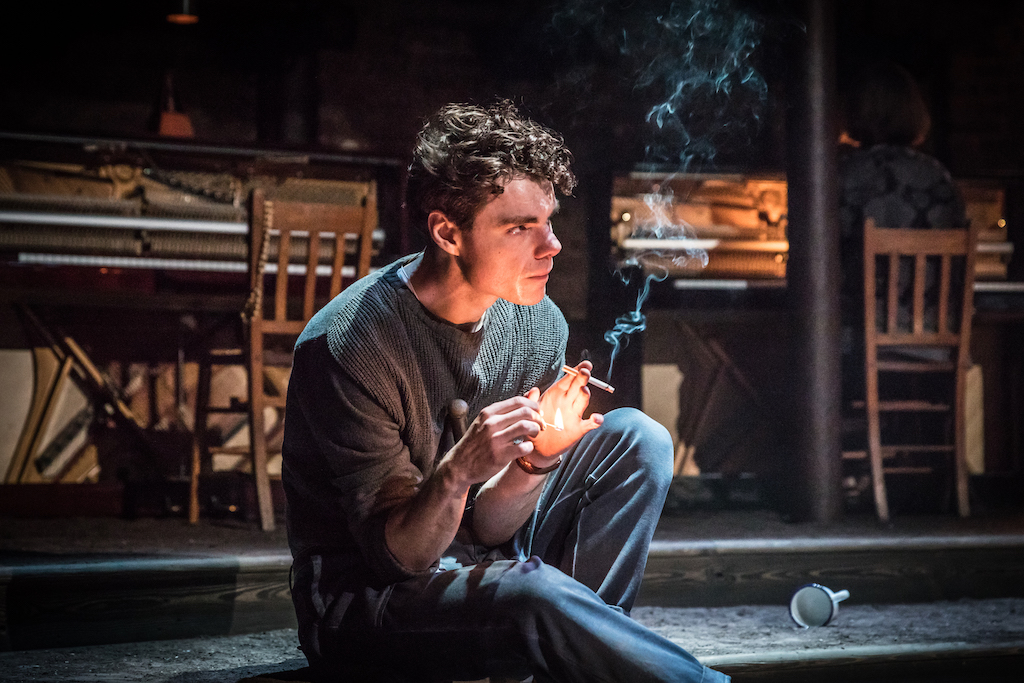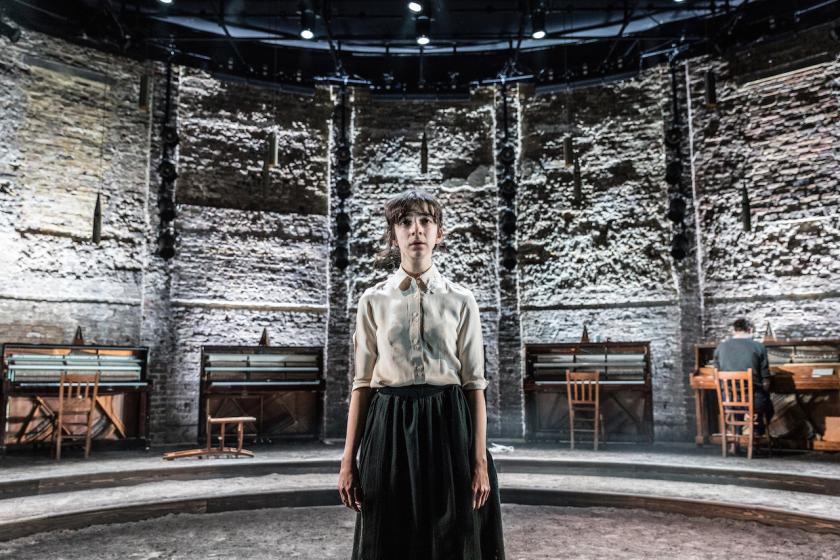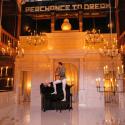This production of Tennessee Williams’ neglected classic, Summer and Smoke, arrives from the Almeida into the West End with five-star plaudits for its pitch-perfect performances and pressure-cooker intensity. In an ideal world, this should guarantee a high-octane evening – but the chemistry of a space counts for a lot in theatre – so there’s inevitably concern that a larger venue will dissipate some of the essential dramatic steam.
It is a pleasure to be able to report, therefore, that Rebecca Frecknall’s boldly expressionist production – with its electrifying soundscape – galvanises the audience from the start. Seven upright pianos, their strings and hammers exposed like animals’ innards, stand in a semi-circle at the back of the stage. From the shadows, performers emerge to create an urgent, hammering refrain that builds in intensity as a woman standing at a microphone gulps and hyperventilates her way through panic that seems to rock her like an earthquake.
It’s the first moment that you realise that, for all its fine ensemble work, this evening is going to be defined by a quite remarkable performance from Patsy Ferran as the uptight minister’s daughter, Alma Winemiller. Summer and Smoke is not subtle symbolically – the name Alma means "soul" while John, the young dissolute doctor’s son with whom she falls in love, worships anatomy both in and out of textbooks – yet Ferran’s raw sensitivity ensures every note rings true.
We are all essentially living inside Alma's head
That’s not least due to the physical comedy that she extracts from her character being as tense as a piano wire. When Matthew Needham’s lanky, drawling doctor’s son (pictured below) identifies Alma as a hysteric, her indignation contorts her, when she giggles, it sounds like there are solid bubbles in her throat. Her arms, clamped stiffly to her sides, seem hinged sharply at the elbows as her hands fly around like panicked birds, while her face, when she is dismayed, radiates both bleak beauty and comic desolation.
Yet we are moved by her throughout, and that’s not just because Frecknall’s brilliant expressionist twist means we are all essentially living inside Alma’s head. It’s also due to our being able to see that she is attracted to John not despite his being her opposite, but precisely because he is her opposite. One of the most incandescent moments – where lighting and sound design fuse perfectly with the play’s emotions – is when Alma and John, teetering dangerously on the verge of cliché, watch a firework display together. The potential absurdity is beautifully offset by other cast members recreating the whistle of the fireworks, before an explosion of sound is matched by an explosion of light within the pianos, and the physical impact resonates on a whole other level. Both Alma and John are buckled under the weight of parental expectations – Alma by her demanding clergyman father, who needs her as a substitute spouse now his wife is mentally ill, and John by a father who is an idealistic doctor. It’s a great bit of double casting, then, to make Forbes Masson play both men as different kinds of emotional tyrants, equally responsible for their children’s insecurities. Nancy Crane also distinguishes herself as Alma’s mother, made simultaneously decadent and spiteful by her dementia. And in another example of clever multiple casting, Anjana Vasan compellingly embodies the confident sensuality of the women in John’s life who act in counterpoint to Alma’s buttoned-up virginity.
Both Alma and John are buckled under the weight of parental expectations – Alma by her demanding clergyman father, who needs her as a substitute spouse now his wife is mentally ill, and John by a father who is an idealistic doctor. It’s a great bit of double casting, then, to make Forbes Masson play both men as different kinds of emotional tyrants, equally responsible for their children’s insecurities. Nancy Crane also distinguishes herself as Alma’s mother, made simultaneously decadent and spiteful by her dementia. And in another example of clever multiple casting, Anjana Vasan compellingly embodies the confident sensuality of the women in John’s life who act in counterpoint to Alma’s buttoned-up virginity.
Although the evening teeters on tragedy – one of its most extraordinary moments, beautifully lit by Lee Curran, is when John’s father is fatally shot – we are allowed to see Alma’s turbulent journey end with a whisper of redemption. It’s just one high note in a complex symphony of emotion that shows us that, for all John’s emphasis on anatomy, it’s as ever the inexplicable aspects of the human heart that are truly transformative.
- Summer and Smoke at the Duke of York's Theatre till 19 January 2019
- Read more theatre reviews on theartsdesk















Add comment